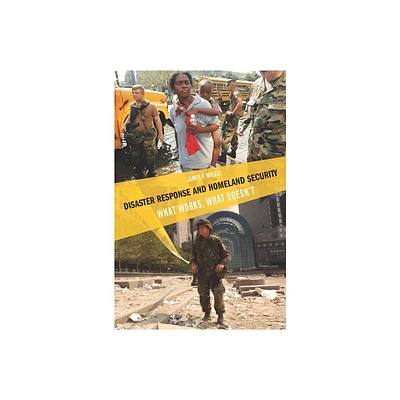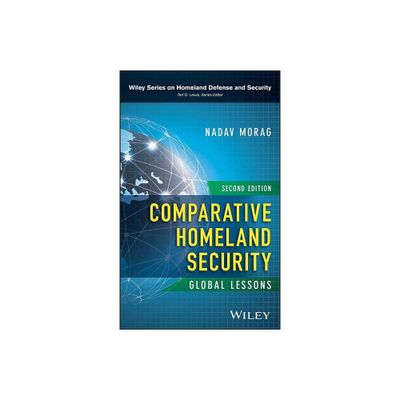Home
FEMA National Response Framework Third Edition June 2016 Department of Homeland Security
Loading Inventory...
Barnes and Noble
FEMA National Response Framework Third Edition June 2016 Department of Homeland Security
Current price: $15.99


Barnes and Noble
FEMA National Response Framework Third Edition June 2016 Department of Homeland Security
Current price: $15.99
Loading Inventory...
Size: Paperback
*Product Information may vary - to confirm product availability, pricing, and additional information please contact Barnes and Noble
FEMA National Response Framework Third Edition June 2016 Department of Homeland Security
This manual, the FEMA National Response Framework Third Edition June 2016 Department of Homeland Security, is a guide to how the Nation responds to all types of disasters and emergencies. It is built on scalable, flexible, and adaptable concepts identified in the National Incident Management System to align key roles and responsibilities across the Nation. This Framework describes specific authorities and best practices for managing incidents that range from the serious but purely local to large-scale terrorist attacks or catastrophic natural disasters. The National Response Framework describes the principles, roles and responsibilities, and coordinating structures for delivering the core capabilities required to respond to an incident and further describes how response efforts integrate with those of the other mission areas. This Framework is always in effect and describes the doctrine under which the Nation responds to incidents. The structures, roles, and responsibilities described in this Framework can be partially or fully implemented in the context of a threat or hazard, in anticipation of a significant event, or in response to an incident. Selective implementation of National Response Framework structures and procedures allows for a scaled response, delivery of the specific resources and capabilities, and a level of coordination appropriate to each incident.
The Response mission area focuses on ensuring that the Nation is able to respond effectively to all types of incidents that range from those that are adequately handled with local assets to those of catastrophic proportion that require marshaling the capabilities of the entire Nation. The objectives of the Response mission area define the capabilities necessary to save lives, protect property and the environment, meet basic human needs, stabilize the incident, restore basic services and community functionality, and establish a safe and secure environment to facilitate the integration of recovery activities.1 The Response mission area includes 15 core capabilities: planning; public information and warning; operational coordination; critical transportation; environmental response/health and safety; fatality management services; fire management and suppression; infrastructure systems; logistics and supply chain management; mass care services; mass search and rescue operations; on-scene security, protection, and law enforcement; operational communications; public health, healthcare, and emergency medical services; and situational assessment.
The priorities of the Response mission area are to save lives, protect property and the environment, stabilize the incident, and provide for basic human needs. The following principles establish fundamental doctrine for the Response mission area: engaged partnership; tiered response; scalable, flexible, and adaptable operational capabilities; unity of effort through unified command; and readiness to act.
Scalable, flexible, and adaptable coordinating structures are essential in aligning the key roles and responsibilities to deliver the Response mission area's core capabilities. The flexibility of such structures helps ensure that communities across the country can organize response efforts to address a variety of risks based on their unique needs, capabilities, demographics, governing structures, and non-traditional partners. This Framework is not based on a one-size-fits-all organizational construct, but instead acknowledges the concept of tiered response, which emphasizes that response to incidents should be handled at the lowest jurisdictional level capable of handling the mission.
This manual, the FEMA National Response Framework Third Edition June 2016 Department of Homeland Security, is a guide to how the Nation responds to all types of disasters and emergencies. It is built on scalable, flexible, and adaptable concepts identified in the National Incident Management System to align key roles and responsibilities across the Nation. This Framework describes specific authorities and best practices for managing incidents that range from the serious but purely local to large-scale terrorist attacks or catastrophic natural disasters. The National Response Framework describes the principles, roles and responsibilities, and coordinating structures for delivering the core capabilities required to respond to an incident and further describes how response efforts integrate with those of the other mission areas. This Framework is always in effect and describes the doctrine under which the Nation responds to incidents. The structures, roles, and responsibilities described in this Framework can be partially or fully implemented in the context of a threat or hazard, in anticipation of a significant event, or in response to an incident. Selective implementation of National Response Framework structures and procedures allows for a scaled response, delivery of the specific resources and capabilities, and a level of coordination appropriate to each incident.
The Response mission area focuses on ensuring that the Nation is able to respond effectively to all types of incidents that range from those that are adequately handled with local assets to those of catastrophic proportion that require marshaling the capabilities of the entire Nation. The objectives of the Response mission area define the capabilities necessary to save lives, protect property and the environment, meet basic human needs, stabilize the incident, restore basic services and community functionality, and establish a safe and secure environment to facilitate the integration of recovery activities.1 The Response mission area includes 15 core capabilities: planning; public information and warning; operational coordination; critical transportation; environmental response/health and safety; fatality management services; fire management and suppression; infrastructure systems; logistics and supply chain management; mass care services; mass search and rescue operations; on-scene security, protection, and law enforcement; operational communications; public health, healthcare, and emergency medical services; and situational assessment.
The priorities of the Response mission area are to save lives, protect property and the environment, stabilize the incident, and provide for basic human needs. The following principles establish fundamental doctrine for the Response mission area: engaged partnership; tiered response; scalable, flexible, and adaptable operational capabilities; unity of effort through unified command; and readiness to act.
Scalable, flexible, and adaptable coordinating structures are essential in aligning the key roles and responsibilities to deliver the Response mission area's core capabilities. The flexibility of such structures helps ensure that communities across the country can organize response efforts to address a variety of risks based on their unique needs, capabilities, demographics, governing structures, and non-traditional partners. This Framework is not based on a one-size-fits-all organizational construct, but instead acknowledges the concept of tiered response, which emphasizes that response to incidents should be handled at the lowest jurisdictional level capable of handling the mission.


















